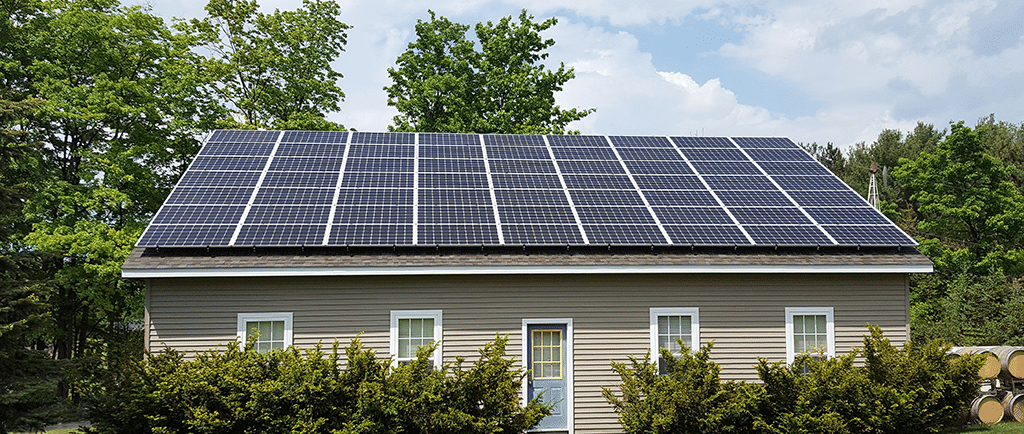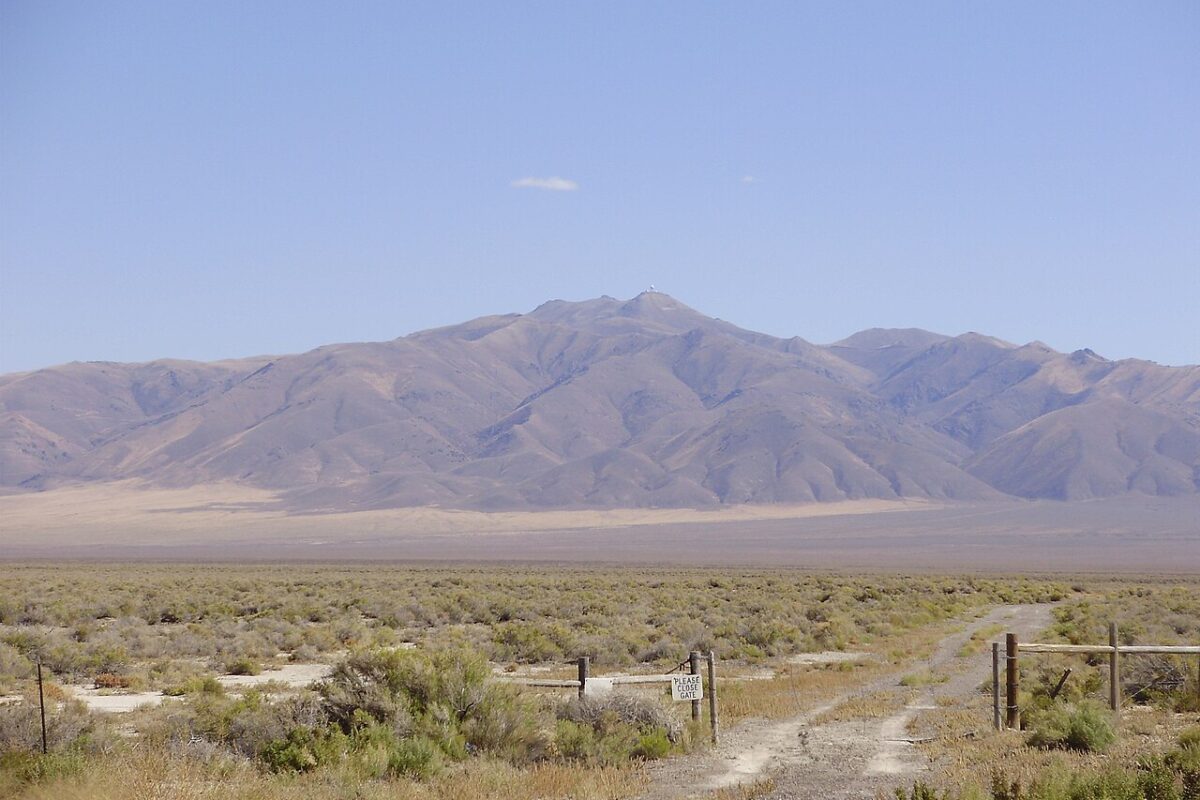A proposed drastic change from net metering for owners of solar PV systems in Michigan is heating up with the Michigan Public Service Commission (MPSC) so far receiving over 500 comments, mostly in opposition, to their February 22nd “Order Regarding Development of a Distributed Generation Program”. This order was launched last May, and comments will be accepted by the MPSC through March 26th, with the final decision coming some time afterwards.
The Program would replace net metering with a tariff based on an inflow/outflow system. The inflow would have net metered customers pay retail rates for the electricity they use, and the outflow that is in excess of the inflow would be paid at a yet undetermined but most likely far lower rate.
Michigan and most other states that have net metering operate on retail rate compensation up to what is consumed on site over a period of one year. For example, if a customer with rooftop solar uses 300 kilowatt-hours (kWh) in a month, but their PV system generates 400 kWh that same month, the 300 kWh consumption is offset by 300 of the 400 kWh of PV generation. The excess 100 kWh is carried over to the following billing period to apply to the first 100 kWh consumed by the customer.
Over a year, consumption and generation undergoes a balancing or “true up”. If the PV system owner consumes more than generated, the customer will have a net consumption bill, in addition to meter or miscellaneous charges. If the customer generates more electricity than consumed over the year period, the customer will have no charge for consumption on their bill. Depending on the state or utility, this customer may be compensated for the surplus electricity at the retail rate, a lower wholesale or avoided cost rate, or possibly not compensated at all.
What is drastic about the Michigan proposal is that the month and year time period would be reduced to hourly time frames using Location Marginal Pricing (LMP) and related factors that would most likely mean much lower compensation rates as well as no ability to accumulate PV generated electricity. For example, if a DG customer used 2 kWh on a June afternoon from 1-2 pm, but generated 5 kWh on the PV system, only the 2 kWh gets offset at the retail rate, and the extra 3 kWh would that would go into the grid would be compensated at the LMP or related rates, which are likely to be only a fraction of retail, and would not be carried over even to the next hour.
Instead of offsetting consumption at the retail rate of $0.145/kWh, the compensation might much lower, and this combination of low prices and uncertainty could likely ruin Michigan’s residential and small commercial solar market. This proposed change would take place after June 1, 2018, granting existing net metering customers a 10 year period to remain in their present status. Opposition came from present and potential rooftop solar customers, solar businesses and trade associations aligned with advanced technologies. Support came primarily from utility entities, particularly Consumers Energy and DTE Corporation.
One reason for opposing any near term change of net metering rests on the fact that behind-the-meter solar is nowhere near the cap of 0.5% of total electricity generation that would trigger any action to change net metering in the state. Distributed solar in Michigan is about 0.1% of total electricity generation with only about 2,000 customers adopting solar, and growth rates indicate it would be some years before reaching the cap. These figures include customer-owned and used installations below 550 kW of capacity, most of which are below 20 kW. Larger and utility owned assets are not included. This low penetration supports the argument that a comprehensive study should be conducted on all of the benefits and costs of distributed generation that would lead to an equitable and complete tariff that could succeed net metering.
The MPSC in their study did cite benefits of distributed generation to consider beyond utility’s “avoided costs”, such as transmission and distribution avoided costs, decreased fuel price rise, avoided emission and environmental costs and reactive supply and voltage control. But no attempt was made to quantify these benefits and use them in a tariff. Many opponents stated that they could accept a comprehensive successor to net metering if the change was not imposed until such factors were fully and comprehensively valued.
Michigan utilities brought up the familiar and verifiably false claim that customers who adopt solar are potentially being subsidized by those who do not. Party of the subsidy argument was that volumetric rates, or amounts of distributed electricity like PV, was either insufficient or too unreliable to cover fixed costs by utilities for existing or potential assets. However, no definitive subsidy figures were given in their comments. There were also some concerns in other comments about the ability of the adequacy of the Advanced Metering Infrastructure (AMI) to handle the inflow/outflow tariff. Responses ranged from minor adjustments being need to some of the smaller Michigan utilities lacking AMI.
Where there have been comprehensive studies commissioned by neutral parties such as legislatures or public utility commissions on the value of distributed solar, the results have almost exclusively shown a net benefit to other ratepayers.
The Lansing, Michigan, based Institute for Energy Innovation has also conducted a study on the MPSC proposal. Their recommendations included encouraging the staff of the MPSC to complete the solar valuation model that they began in their February report that would to a comprehensive and transparent process that would fully account for the benefits and costs of DG in forthcoming tariffs.
This content is protected by copyright and may not be reused. If you want to cooperate with us and would like to reuse some of our content, please contact: editors@pv-magazine.com.








Establishing a solar option for Michigan residents is important for our state to develop jobs in this field. I have considered investing in solar panels but the questions about whether the state will continue to allow connecting to the grid and how this would affect rates has been a concern. The proposed change will essentially eliminate solar power for our state. Power companies are trying to change the rules to get rid of competition. Any politician supporting this may be thinking of campaign donations instead of our state’s future. This proposed change includes many uncertainties in rates and obviously favors power companies over solar energies.
We see the continued war on our citizens by corporations and their stooges. With income inequality at an all time in this country, More gifts of money to the utility companies taken through political chicanery are a bad idea and just add to the perception that the upper class is ratcheting up the ongoing class warfare on the rest of society. This will end badly for the haves, I guarantee it. Time to say “no more”.
One thing that I have learned after installing my PV system, my storage battery, and can monitor my usage is that energy storage whether it be home battery or EV battery is really the next real savior for solar in Michigan. Balancing the PV system and battery storage will be key towards minimizing export and import to the grid. Net metering is a great program, but when the account zeros out each year, it is a big unsettling. I produced that energy, the utility sold it to someone else, and then each year the “same-as-cash/store credit” account is zeroed,…that is stealing in my book. In the end, I think I could have benefited from having a smaller PV system and more storage. Installers must now change their marketing approach and design systems smarter in the “post net metering” world.
Would be good if you provided a link to the commission.
I think another important point that should be acknowledged by the power companies, in this argument, is the reduction of our footprint when using natural infinite resources. A brief article I read suggests that the power companies sometimes use electricity generation means that are natural such as with water and air, but it needs to be encouraged by them for their customers, not discouraged. the solar customers that help produce electricity for others to use (their surplus), should be treated like partners of a sort, being both users and generators of natural electricity.
Well, if they successfully pass this attack on net metering…
…everyone’s going to get a nice big battery. And program it to minimize imports and exports, using all their solar power at home and only topping up from the grid when the battery is at zero (and only exporting when it’s completely full).
Probably not what the power companies want.